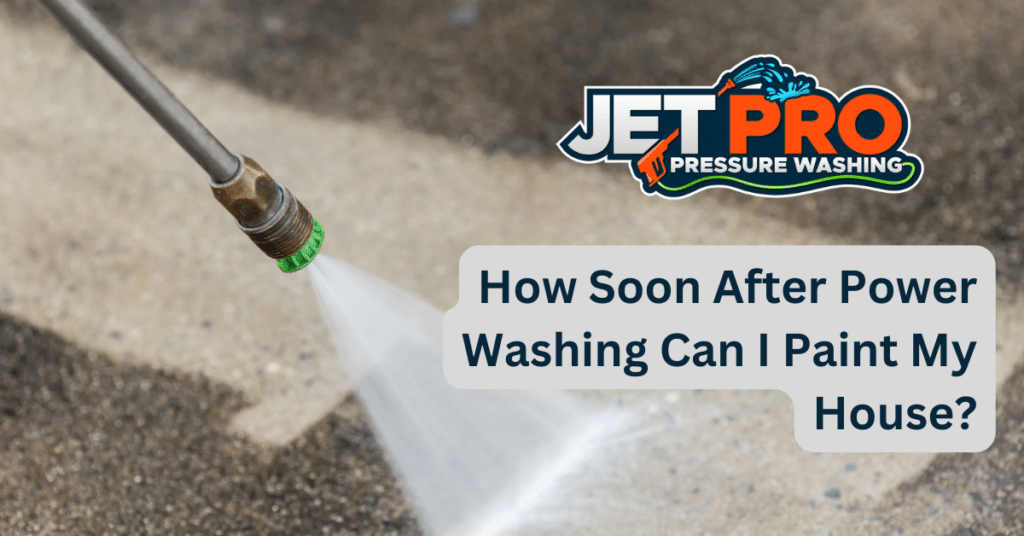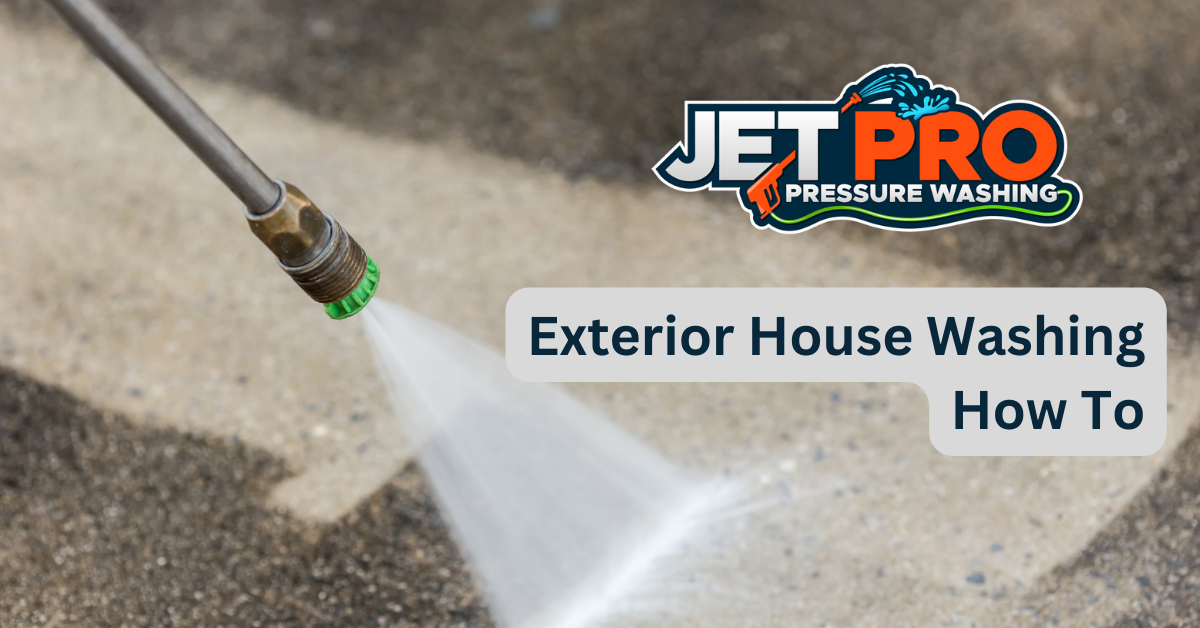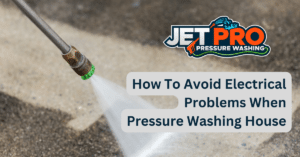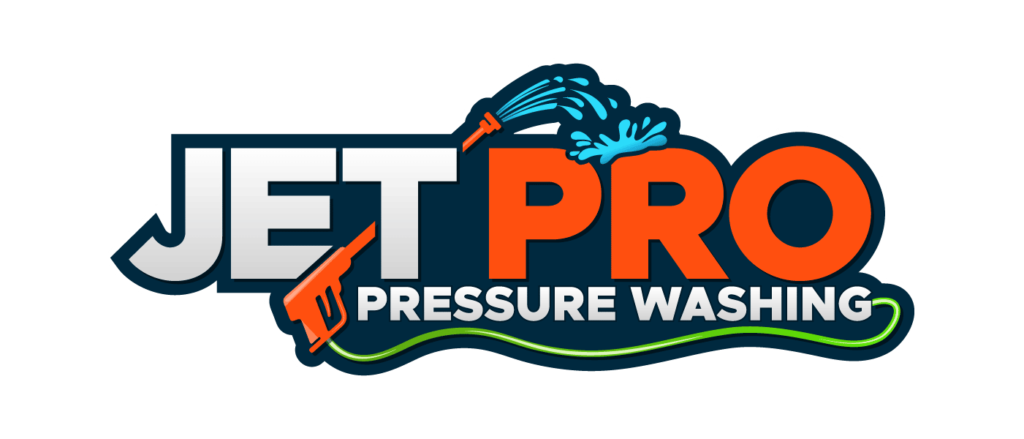Looking to paint your house after having it professionally washed by a reputable house washing company? It’s crucial to comprehend the necessary steps and timing required for a successful paint job. Before you start, make sure you know what to use for power washing a house and how to estimate washing a house. Once your house is power washed, it’s important to let it dry completely before painting. Applying caulk and preparing the surface are also crucial steps. For more helpful tips on window cleaning, check out our article here. By following these steps, you can ensure that your house is properly cleaned and painted for a fresh, updated look.
Preparing the Surface
Preparation of the surface is a key step prior to beginning the painting process.
Power washing is an effective method for removing dirt, debris, and other contaminants from the surface.
After the area has been power washed, it is important to allow the surface to dry completely before applying paint.
This will help to ensure better adhesion of the paint and a longer lasting paint job.
After the surface has had sufficient time to dry, it should be inspected for any remaining dirt or debris, and any spots should be sanded or scraped away.
Once these steps have been completed, the surface is ready to be painted.
Power Washing
Choosing the right pressure washer is essential for power washing a surface.
The pressure should be adjusted to the type of surface being cleaned, as too much pressure can cause damage.
It is important to clean the surface thoroughly, as any dirt or debris left behind can affect the quality of the paint job.
Choosing the Right Pressure Washer
Selecting the proper pressure washer is an important step in the process of refreshing the exterior of a home. It is essential to choose a pressure washer that is suited to the task at hand, as using an incorrect pressure washer may cause damage to the surface being cleaned.
The size of the job, the type of surface, and the amount of dirt and grime to be removed are all factors to consider. For smaller jobs such as patios, decks, and siding, an electric pressure washer with 1,400 to 2,000 psi is generally sufficient.
For larger jobs such as driveways, larger electric pressure washers with 2,500 to 3,000 psi are recommended. For more challenging jobs, such as removing paint from a concrete surface, a gas-powered pressure washer with 3,500 to 4,200 psi is usually the best choice.
It is important to ensure that the cleaning detergent is compatible with the surface being cleaned.
Applying the Right Pressure
The proper application of pressure is critical to achieving the desired results when using a pressure washer. Different surfaces will require different pressures in order to remove dirt and debris while not damaging the surface. If the pressure is too high, it could cause etching or other damage to the surface. Conversely, if the pressure is too low, it may not be effective in removing dirt and debris.
It is important to research the type of surface being cleaned to determine the appropriate pressure to use. In addition, the distance between the pressure washer and the surface should be taken into account. Generally, the further away the pressure washer is from the surface, the lower the pressure should be.
It is important to keep the pressure washer nozzle in constant motion while cleaning. This will help to ensure that the pressure is even across the entire surface being cleaned. The use of the correct pressure and distance when using a pressure washer will help to ensure the desired results are achieved.
Cleaning the Surface Thoroughly
Thoroughly cleaning a surface requires one to consider various factors such as pressure, distance, and motion. It is essential to use the right pressure, the correct distance, and the proper motion when power washing a surface to ensure proper cleaning.
When power washing the desired surface, one should move the wand in a controlled, consistent manner across the surface. This will ensure that all areas of the surface are cleaned equally. Additionally, it is important to adjust the distance of the wand from the surface, as this will affect the pressure of the water being applied. It is recommended to keep the wand at least one foot away from the surface to ensure that the pressure remains effective.
Finally, it is essential to use the appropriate setting on the pressure washer to ensure that the pressure is not too strong or too weak for the material being cleaned. By following these steps, one can be sure that the surface is properly cleaned and ready for painting.
Drying the Surface
It is important to ensure that the surface is completely dry before proceeding with any painting. This can be done by allowing the surface to air dry, using a fan or a dehumidifier, or wiping the surface with a dry towel. It is important to note that the drying process can take anywhere from several hours to a few days depending on the temperature and humidity of the environment. Therefore, it is important to be patient and allow the surface to dry completely before beginning the painting process.
Different products may require different drying times. For instance, oil-based paints may require up to 24 hours of drying time, while latex-based paints may only require up to 4 hours.
In addition, it is important to check the weather forecast before beginning the painting process. Since rain can wash away any recently applied paint, it is important to make sure that the forecast is clear and dry before beginning the painting process.
It is generally recommended to wait at least 24 hours after power washing before beginning to paint. This will ensure that the surface is completely dry and the paint will adhere properly. However, it is important to follow the specific instructions provided by the manufacturer before beginning any painting project. This will ensure that the painting process is successful and the results are satisfactory.
Applying Caulk
Prior to painting, it is essential to apply caulk to any cracks or gaps in the surface to ensure a smooth and flawless finish — like a work of art!
Caulk is a flexible and adhesive sealant used to fill cracks and gaps on the surface, and also to form a protective barrier against moisture and dirt. This can help protect the newly painted surface and prevent the paint from cracking or peeling off.
It is important to select the appropriate caulk for the surface, for example, a latex caulk for wood, a silicone caulk for bathrooms, and an acrylic or polyurethane caulk for metal.
Applying caulk to the surface is a fairly simple process, but should always be done after the surface has been thoroughly cleaned and dried. It is important to use a caulk gun and to apply an even and continuous bead of caulk along the crack or gap. The caulk should then be smoothed with a wet finger or a tool, and any excess should be wiped off with a damp cloth. The caulk should be allowed to dry for at least 24 hours before painting.
The use of caulk can help make the painting process easier and more successful, as it helps to create a durable and attractive finish. When applied correctly, it can provide protection and extend the life of the paint job.
It is also important to ensure that the paint is suitable for the surface, and that it is applied correctly in order to achieve the desired result.
Painting the House
Painting the house requires careful consideration of the right paint and the application of the paint.
The selection of the right paint is important as it can affect the overall look and durability of the finished product.
Once the paint has been chosen, the application of the paint should be done evenly and with care.
To ensure even coverage, a second coat may be necessary.
Choosing the Right Paint
Careful consideration of the type of paint to be used is essential when undertaking a home improvement project. Paint is available in various finishes, such as matte, eggshell, satin, semi-gloss, and high-gloss. Each finish offers different levels of durability, washability, and stain resistance.
The type of finish should be chosen based on the intended use of the room. For example, a high-gloss finish is best for a bathroom or kitchen, as it is highly durable and easy to clean. On the other hand, a low-sheen finish is best for a living room, as it is less reflective and offers a softer, warmer look.
It is also important to consider the quality of the paint, as higher-quality paints are more durable and offer better coverage.
Applying the Paint Evenly
Applying the paint evenly is a critical step in achieving a successful home improvement project. To ensure an even coat of paint, begin by preparing the surface before painting.
This involves cleaning and removing any dirt, dust, and debris from the surface. Use a power washer to remove any large chunks of debris.
After the surface is clean and dry, use a putty knife or sandpaper to fill in any cracks or crevices. This will provide a smoother surface to paint on.
The next step is to apply the paint. For best results, use a roller and brush to apply the paint. Begin by rolling the paint on the wall and then use a brush to fill in any areas that were missed with the roller.
Make sure to use even strokes and press down lightly to ensure the paint is applied evenly. This will help to avoid any streaks or lines in the paint.
After the first coat has dried, apply a second coat to ensure an even finish.
Applying a Second Coat
After the first coat of paint has dried, a second coat should be applied to ensure an even finish.
This coat should be applied lightly, as too much paint will cause it to drip, creating an uneven finish.
It is important to use a roller or brush that is of a good quality, as well as a good grade of paint that has been mixed properly, in order to achieve an even finish.
For best results, the second coat should be applied in the same direction as the first, as this will help the paint to spread evenly.
Additionally, the second coat should be applied within a day or two of the first coat, to ensure that the paint adheres properly.
Any longer than this and the paint may not adhere correctly, resulting in an uneven finish.
Frequently Asked Questions
What type of paint should I use?
According to a survey conducted by the National Paint and Coatings Association, approximately 75% of homeowners choose latex paint for their home painting projects.
Latex paint is a popular choice due to its durability, ease of application, and wide range of colors. It is also easy to clean and can be used on a variety of surfaces, including wood, metal, and masonry. Additionally, latex paint is generally less expensive than other types of paint, making it a great option for those on a budget.
How much paint do I need?
The amount of paint needed to paint a house depends on several factors, such as the size of the house, the type of paint used, and the number of coats of paint desired.
Generally, a gallon of paint will cover approximately 400 square feet of wall space.
To calculate the amount of paint needed, measure the total square footage of the house and divide it by 400. This will give you the number of gallons of paint needed to cover the entire house.
Additionally, it is important to factor in the number of coats of paint desired, as this will increase the amount of paint needed.
How much does power washing cost?
Power washing a house can be a costly venture, depending on the size of the house, the type of materials being washed, and the type of power washer being used.
It is important to consider the cost of hiring a professional power washer, as well as the cost of renting or buying a power washer.
The cost of power washing a house typically ranges from $200 to $400, although this can vary greatly depending on the house size and the amount of work needed.
Additionally, it is important to factor in the cost of supplies, such as cleaning solutions and protective gear.
All of these costs should be taken into consideration when deciding whether power washing is the right choice for your home.
Is it better to use a brush or roller?
When it comes to painting a house, the use of a brush or roller is a matter of personal preference.
Brushes can provide more precision and control over the area being painted, while rollers offer a quicker option that provides even coverage in large areas.
Rollers can also be used to apply a thicker coat of paint than brushes.
Each tool has its own advantages and disadvantages, so it is important to carefully consider which one is best for the job at hand.
Can I power wash and paint in the same day?
It is possible to power wash and paint in the same day, but as the adage goes, “haste makes waste.” It is advised to take your time to ensure a quality result.
It is important to allow the house surface to dry completely before painting, as moisture can cause the paint to blister or peel. It is highly recommended to wait at least 24 hours for the surface to dry. If the temperature is extremely hot, it may take longer for the surface to dry.
Additionally, it is important to check the weather forecast before beginning the project. It is best to avoid painting in extreme heat or humidity as this can cause the paint to dry too quickly.
Conclusion
Cleaning and prepping a surface prior to painting is an important step. Power washing a surface can effectively rid it of dirt, debris, and other contaminants, creating a clean slate with which to begin.
After power washing, the surface should be allowed to dry completely before beginning the painting process. If needed, caulk should be applied to any cracks or gaps in the surface.
Finally, the painting process can begin. Meticulous preparation of the surface will ensure that the paint adheres properly and results in a beautiful, lasting finish. To achieve a truly stunning finish, one must pay attention to the details, making sure all steps are taken with care and precision.
As the old adage goes, “the devil is in the details.”





